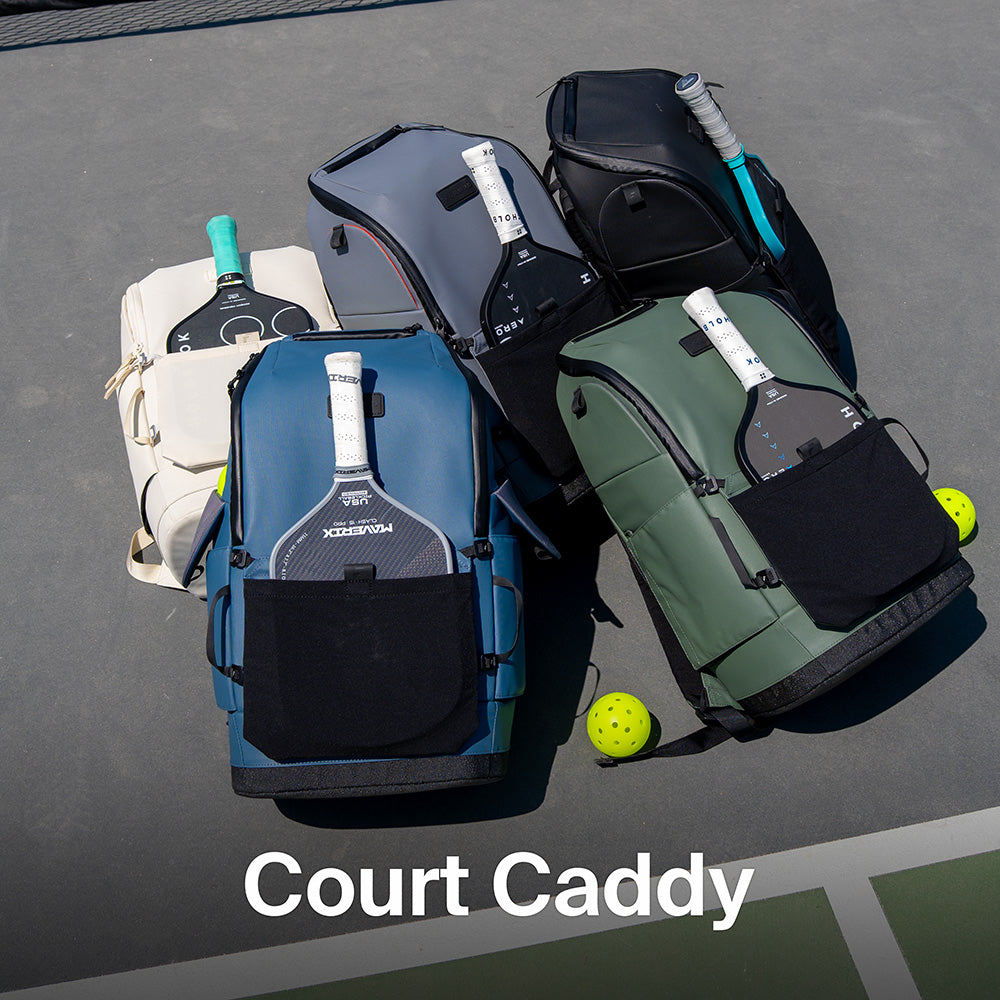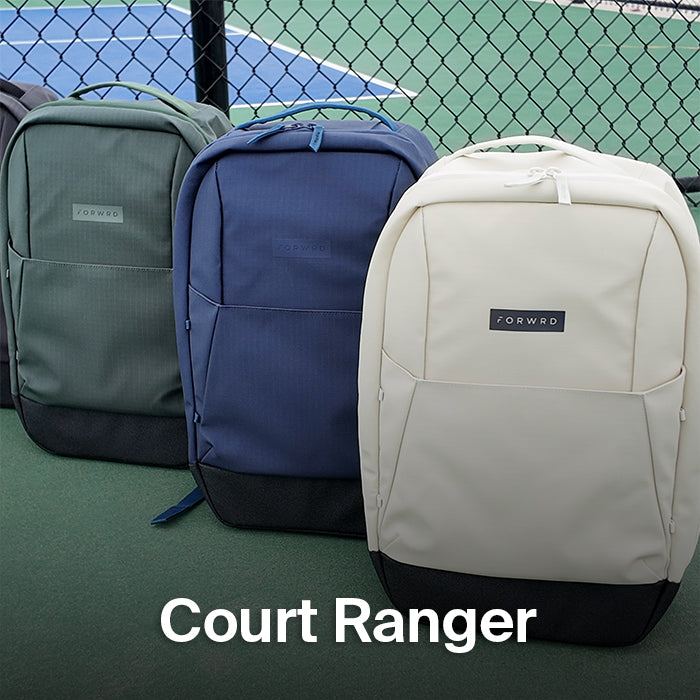Pickleball Rules About the Kitchen: Complete Guide to the Non-Volley Zone
The kitchen in pickleball might be the most misunderstood area on the court, yet mastering these rules can dramatically elevate your game. Whether you’re a new player confused by line calls or an experienced player looking to refine your strategic play, understanding pickleball kitchen rules is essential for fair play and competitive success.
This comprehensive guide covers everything you need to know about the kitchen’s rules, from basic fundamentals to advanced strategies used by pickleball pros. You’ll learn when you can step into the kitchen, how momentum carries affect your shots, and why this unique zone exists in the first place.
What is the Kitchen in Pickleball?
The kitchen in pickleball refers to the 7-foot non volley zone extending from the net on both sides of the pickleball court. This rectangular area spans the full 20-foot width of the court, creating a zone that measures exactly 140 square feet per side.
While commonly referred to as the “kitchen,” the official rules use the term “non-volley zone” or NVZ. The pickleball kitchen is defined by clear boundary markings that include:
-
The kitchen line (parallel to the net, exactly 7 feet away)
-
The sidelines (court’s outermost lateral boundaries)
-
The net itself
An important detail many players miss: the lines marking the kitchen area are officially considered part of the kitchen zone itself. This means touching the non volley zone line during a volley constitutes a fault, just as stepping inside the kitchen zone would.
Fundamental Kitchen Rules You Must Know
Understanding pickleball’s non volley zone rules starts with these core principles that every pickleball player must follow:
The Primary Rule: No Volleying in the Kitchen
You cannot volley the ball while standing in the kitchen or while any part of your body or equipment touches the kitchen zone. This rule prevents players from positioning themselves aggressively close to the net for easy smash shots.
What Constitutes a Volley?
A volley means hitting the ball in the air before it bounces on the court surface. This includes:
-
Overhead smashes
-
Quick reflex shots at the net
-
Any contact with the ball before the ball bounces
The key distinction: volleys happen before the ball bounce, while groundstrokes occur after the ball bounces on your side of the court.
Understanding Momentum in Kitchen Rules
Player’s momentum plays a crucial role in kitchen violations. According to USA Pickleball official rules 9.B.1, 9.C, and 3.A.20, it’s a fault if your momentum from a volley causes you to subsequently touch the kitchen or kitchen line, even if you made contact outside the zone.
Here’s how momentum violations work:
-
You volley legally outside the kitchen
-
Your follow through or forward motion carries you into the non volley line
-
This constitutes a fault, regardless of when you actually cross the line
To avoid momentum faults, you must re establish your position completely outside the kitchen before your next shot.
Equipment and Body Restrictions
The rule prevents players from having any part of their body, clothing, or equipment touch the kitchen during a volley. This includes:
-
Feet or any body part
-
Paddle or racquet
-
Clothing items like hats or shirts
-
Anything you’re wearing that might drop into the zone
When You Can and Cannot Enter the Kitchen
Contrary to common misconceptions, players can legally enter the kitchen zone under specific circumstances:
Legal Kitchen Entry
You can step into the kitchen when:
-
Playing any shot after the ball bounces (dinks, drop shots, returns)
-
Moving through the area between rallies
-
Positioning yourself before the ball is hit by your opponent
-
Retrieving balls that have bounced in the kitchen area
Kitchen Rules for Serving
Serving has special restrictions regarding the kitchen zone:
-
Your pickleball serve cannot land in the kitchen or touch the kitchen line
-
Unlike other court lines that are considered “in,” the kitchen line is “out” for serves
-
Any pickleball serve hit that lands in the kitchen area results in a fault
This unique serving rule emphasizes the kitchen’s special status compared to other areas of the court.
Wheelchair Pickleball Kitchen Adaptations
The official rules include adaptations for wheelchair players to ensure fair play:
-
Front wheels may touch the kitchen line during volleys
-
Rear wheel contact with the non volley zone line constitutes a fault
-
These modifications account for turning radius and stability needs while maintaining rule integrity
Advanced Kitchen Strategies and Shots
Experienced players use the kitchen area as the center of their strategic play, employing sophisticated techniques that new players should understand.
Dinking: The Primary Kitchen Strategy
Dinking involves hitting soft shots that land just inside the opponent’s kitchen, forcing them to let the ball bounce before playing their next shot. Effective dinking requires:
-
Precise shot placement to keep the ball low
-
Positioning with feet just behind the kitchen line
-
Patience to engage in longer rallies
-
Control to avoid hitting shots too high (giving opponents easy volleys)
Doubles Positioning Around the Kitchen
In doubles play, both partners typically position themselves near but not touching the kitchen line. This allows for:
-
Quick movement to cover aggressive net shots
-
Ability to step into the kitchen for soft returns
-
Optimal court coverage while avoiding line faults
-
Communication for effective teamwork
The Erne Shot and Kitchen Rules
The erne shot, named after player Erne Perry, represents a legal loophole around kitchen restrictions. Players execute this advanced technique by:
-
Predicting an opponent’s cross-court dink
-
Moving outside the sideline while the ball is in the air
-
Volleying the ball while positioned off-court
-
Landing outside the court boundaries
Since the player’s feet and body are outside the sidelines rather than in the kitchen zone, this volley is perfectly legal under current rules.
Common Kitchen Rule Violations and Faults
Understanding frequent mistakes helps players avoid costly errors during play:
Most Common Violations
|
Violation Type |
Description |
Consequence |
|---|---|---|
|
Line touching |
Foot or equipment touches kitchen line during volley |
Loss of point/serve |
|
Momentum fault |
Forward motion carries player into kitchen after legal volley |
Loss of point/serve |
|
Equipment drop |
Paddle, hat, or clothing falls into kitchen during volley |
Loss of point/serve |
|
Serve placement |
Ball lands in kitchen or on kitchen line during serve |
Service fault |
Developing Kitchen Awareness
To avoid stepping into violations:
-
Practice deliberate footwork drills near the kitchen line
-
Develop awareness of your position relative to the line
-
Control your follow through to prevent momentum carries
-
Secure loose clothing and equipment before playing
Why the Kitchen Exists in Pickleball
The non-volley zone serves several important purposes that distinguish pickleball from other racquet sports:
Preventing Net Domination
The rule prevents players from positioning themselves aggressively at the net for easy put-away shots. Without this restriction, the game would become dominated by quick, aggressive volleys rather than the strategic, patient play that characterizes pickleball.
Encouraging Longer Rallies
By forcing players to hit the ball after it bounces when close to the net, the kitchen rules promote:
-
Extended rallies that test endurance and strategy
-
More opportunities for shot placement and finesse
-
Greater emphasis on soft shots and ball control
-
Reduced reliance on power and aggressive positioning
Historical Development
The non-volley zone has been fundamental to pickleball since the game’s inception in 1965. As the sport evolved, this rule was refined to maintain competitive balance and prevent dangerous play close to the net.
Origin of the “Kitchen” Name
The term “kitchen” likely originated from shuffleboard, where the “kitchen” or “10-off” area penalizes players whose shots land there. The pickleball community adopted this terminology, and it stuck despite the official designation being “non-volley zone.”
Another theory connects to the phrase “if you can’t stand the heat, get out of the kitchen,” referencing the high-pressure, high-risk nature of play near the net.
Frequently Asked Questions About Kitchen Rules
Can you jump and land in the kitchen after volleying? No. Even if you’re airborne when you volley the ball, landing in the kitchen afterward constitutes a momentum fault.
What happens if partners take turns entering the kitchen? Each player must follow kitchen rules independently. One partner being outside the kitchen doesn’t allow the other to volley from inside the zone.
Is the kitchen line “in” or “out” during regular play? During rallies, the kitchen line is “in” and playable. Only during serves is the kitchen line considered “out.”
Can you reach over the kitchen line to volley? Yes, as long as no part of your body or equipment touches the kitchen or its lines. However, be careful about momentum carrying you forward.
What if the ball hits the kitchen line during play? If a live ball bounces and touches the kitchen line, play continues normally. The line is only “out” for serves.
Master the Kitchen to Master Pickleball
Understanding pickleball rules about the kitchen transforms your approach to the game. These rules shape every aspect of play, from basic shot selection to advanced strategic positioning. The kitchen zone creates the unique character of pickleball, emphasizing finesse over power and strategy over aggression.
Whether you’re working on your dinking technique, practicing positioning for doubles play, or learning to avoid stepping violations, remember that kitchen mastery comes through deliberate practice and rule awareness. The more comfortable you become with these rules of the kitchen, the more confidently you can play pickleball at any level.
Start by practicing your footwork around the kitchen line, focus on keeping the ball low in your shots, and always be mindful of your position when you hit the ball. With time and practice, navigating the kitchen will become second nature, allowing you to focus on the strategic elements that make pickleball such an engaging game.


Leave a comment
All comments are moderated before being published.
This site is protected by hCaptcha and the hCaptcha Privacy Policy and Terms of Service apply.